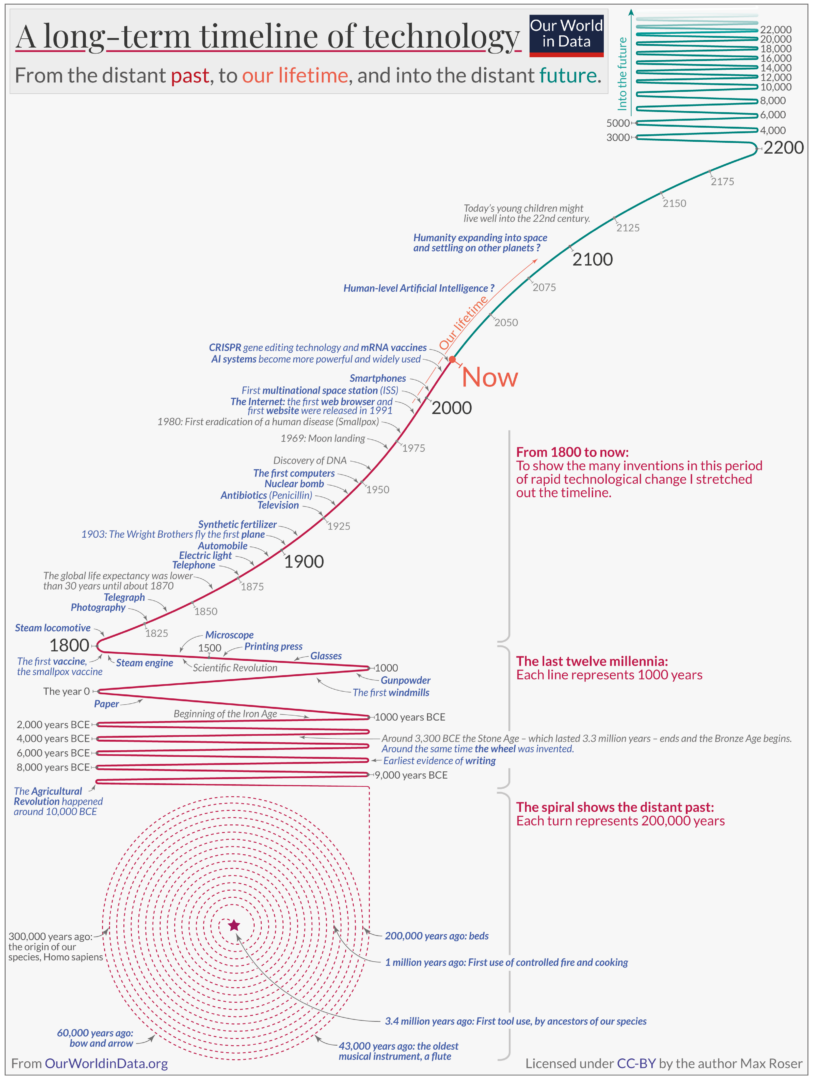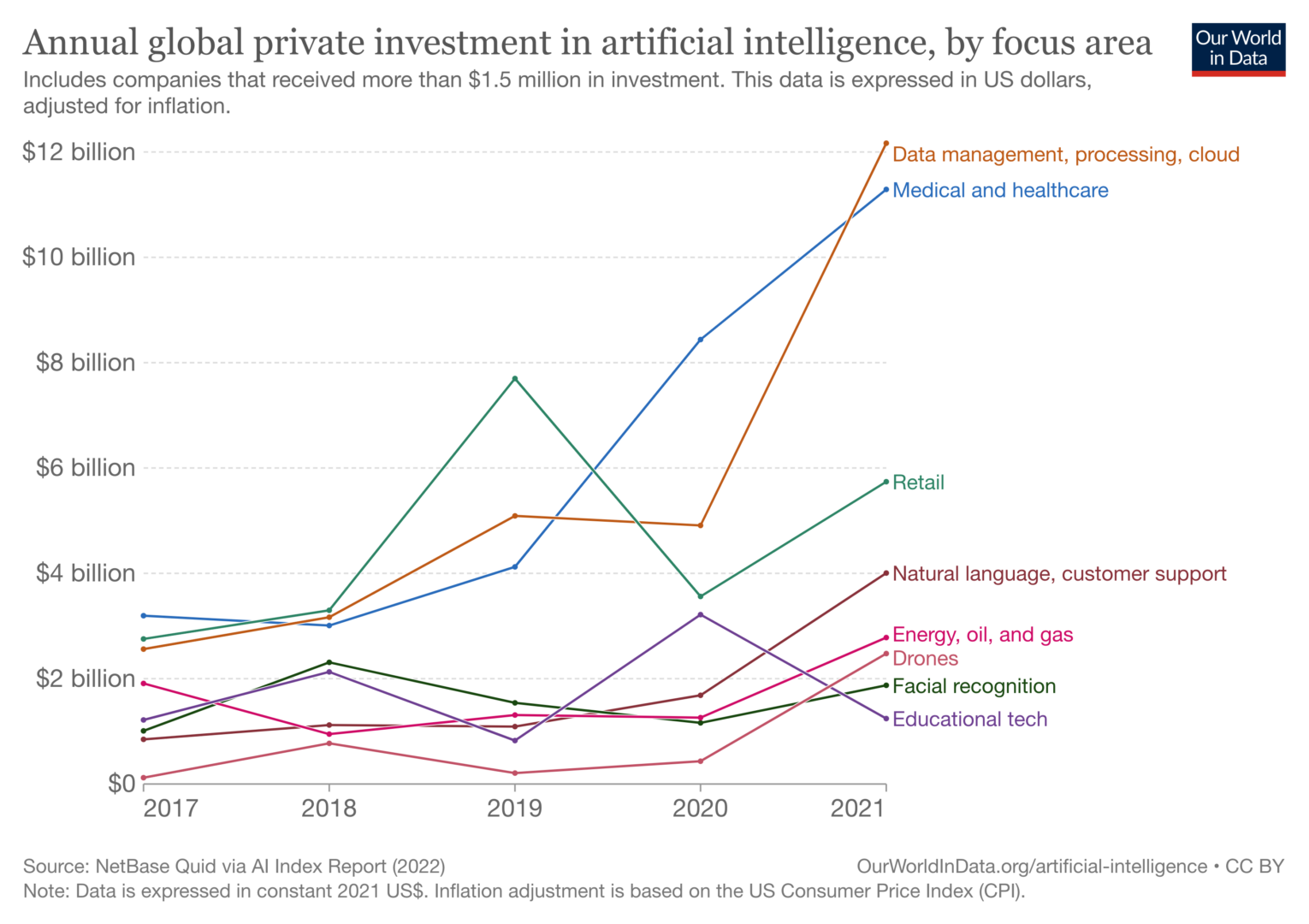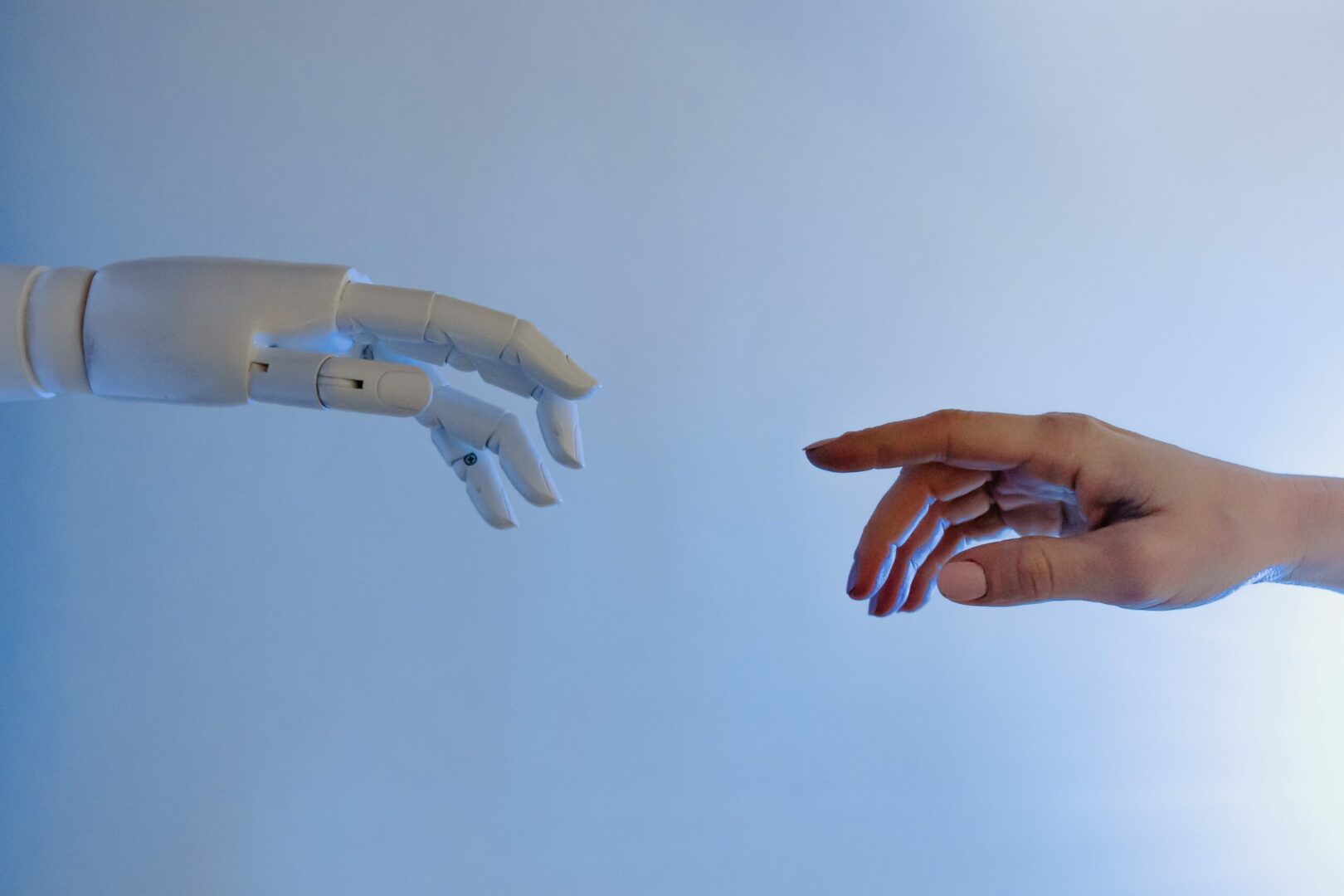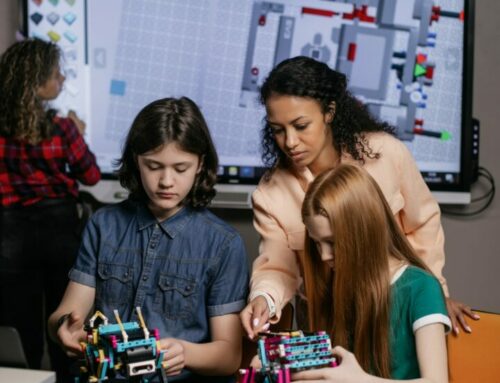See the special report on AI and higher education by University World News.
Reimagining education in the age of the artificial
Patrick Blessinger and Abhilasha Singh
Ever since humans learned to speak, formed social communities, and invented written language, they have gradually decoupled themselves, link by link, from the evolutionary shackles of natural selection and survival of the fittest restraints. Over the past several thousand years, humans have also been decoupling themselves from the restraints placed on them by authoritarian regimes. This latter condition has proven equally difficult but with knowledge comes awareness and with awareness comes the desire for freedom and self-determination.
One of the chief outcomes of this two-pronged decoupling process is that humans are now able, to a large degree, to adjust the environment to fit their needs rather than merely adapting to the whims and conditions of the environment. Perhaps the most significant event that shifted this decoupling process into high gear was the Agricultural (Neolithic) Revolution around 10,000 BCE. By replacing a nomadic lifestyle with a more sedentary lifestyle centered on permanent communities, humans began to take greater control of their own lives and destiny.
Humans no longer had to scavenge for food left behind by other predators and humans no longer had to search out, chase down, and kill roaming animals for their food supply. Instead, they learned to domestic animals and plants to better manage their own food supply over the long term. This significantly increased their odds of survival and gave them more control over their own lives. This major paradigm shift allowed humans to progress at a much faster rate compared to their hunter-gather ancestors.
The shift to agriculture triggered a burst of knowledge development because agriculture required humans to learn in ways never before needed or imagined. Humans had to learn how to domestic livestock and crops and all the new knowledge and skills needed to maintain those two activities – new tools, new methods, new skills, new crafts, and new social structures. All this activity was driven by knowledge development. Knowledge feeds upon itself – the more knowledge that is produced, the more knowledge that is consumed, which, in turn, produces more new knowledge. This is the virtuous cycle of knowledge development which has had far-reaching impacts on humanity and the planet.
Age of the artificial
Since the dawn of the Agricultural Revolution, human development has been characterized chiefly by social development (that is, our interconnectedness and interdependence through communities and groups) and by cognitive development (that is, our individual and collective intelligence). The development of these qualities (both in degree and in kind) is what makes humanity unique from other species and what has allowed humans to progress past the survival of the fittest constraint. Now, human rights and the rule of law, not survival of the fittest, guide social life and human actions. Now, artificial selection and human engineering, not natural selection, allow humans to alter and control the natural environment in which they live to an increasingly large degree.
For instance, within a very short timeframe, humans have built mass transportation systems that can transport anyone around the world in a matter of hours; humans have created mass urban societies that work remarkedly well given the complexity of such societies; humans have created mass-produced food systems that can feed billions of people; and human have created mass communication systems that allow people to instantly communicate with others around the world.
Humans have progressed to the point where we no longer need to rigidly adapt to the cycles of Nature; rather, we can use technology and engineering methods to build our own climate-controlled living conditions and our own diverse food supplies that are increasingly resistant to pests, drought, and other environmental conditions. By and large, the artificial selection of animals and plants (which humans have practiced for thousands of years) is now giving way to genetic engineering, which can produce the same desired traits faster and with more precision.
We now have enough knowledge of human, animal, and plant genetics to artificially manipulate genes to produce desired traits rather than relying solely on natural processes. Genetically modified organisms (GMOs) include livestock (for example, salmon, pigs), crops (for example, corn, soybeans, potatoes, sugar beets), and medicines. GMOs are now firmly entrenched in the US food supply, for instance, where more than 95% of animals that are used for meat and dairy consumption now eat GMO foods. In the US, GMOs are regulated by the government for human and environmental health, safety, and quality standards.
Since all humans, animals, plants, and non-living matter are interconnected, to varying degrees, through the food web, ethical concerns (safety, health, quality) are always at the forefront of any discussion dealing with genetic engineering, especially sensitive areas such as cloning, human gene editing, synthetic biology, artificial wombs, reproductive transplantations, and other biomedical issues. The potential for misuse is ever present, and the long-term effects are not completely known. Therefore, when modifying genetic code, society must proceed with an abundance of caution and safeguards. To date, no country explicitly allows heritable human genome editing.
Rise of the machines
Artificial intelligence (AI) has now come to the forefront of society. Simply put, AI is the ability of machines to exhibit intelligent behavior. AI, in many ways, mimics human intelligence and, presumably, AI will continue to be more human-like and, perhaps, may one day surpass human intelligence in some important ways. Furthermore, AI is one of the chief characteristics of Industry 4.0 and Web 4.0, which the world is currently experiencing. Other characteristics of Industry 4.0 and Web 4.0 include the integration of digital, physical, and biological systems, genetic engineering, the internet of things, intelligent robots, and advanced human-machine interfaces.
AI could have an impact equal to the impact of electricity in the 19th century and the impact of digital electronics in the 20th century. But unlike those revolutions, the speed with which AI will proceed will likely be much faster because it leverages all the previous technological developments and knowledge that came before it. AI has been around for decades, but until recently it has lacked the massive amounts of data needed to make it useful.
As with the previous revolutions that have occurred over the past few hundred years, the development of AI remains uncharted territory, and any predictions are perhaps speculative. This is also true about how AI may impact higher education. Nonetheless, it does highlight the need for colleges and universities to teach students information literacy and how to discern the trustworthiness of information on the internet. Also, there are ethical and legal concerns (for example, copyright, intellectual property, plagiarism) about how students may use AI for written papers and other assignments.
How will AI benefit higher education institutions? One of the most promising benefits for institutional leaders will be the use of AI to process and interpret big data (for example, patterns and trends in student data). This implies that higher education institutions will likely have to make new investments in technology and in learning design as well as develop new models for personalized learning, allowing students more flexibility in their learning paths.
Will AI be beneficial to the student experience or potentially detrimental? What tools and processes will universities need to put in place to safeguard academic integrity? These are some of the same questions and concerns posed when the Web first became an information resource for students in the 1990s. Students need to learn how to discern more effectively among an increasing tidal wave of digital information.

Implications for higher education
Potential AI applications include improved student retention and graduation, improved learning management systems, improved learning analytics, more personalized and adaptive learning spaces, and more collaborative research and teaching. As such, there will be many policy implications for educational leaders to take into consideration when making decisions.
The world today is changing at an unprecedented pace, creating widespread disruption. The nature of work is changing also, and the workforce around the world needs to change and adapt to these new demands and opportunities. Digital up-skilling is a very important issue now, whether one is joining the workforce or has plenty of professional experience.
Promoting digital transformation in higher education using AI has great potential. It has been a challenge for higher education institutions to meet the job market demands that require advanced digital skills. Some universities use a number of different applications but with limited integration across the institution. The immense need for digital transformation and integration in higher education cannot be overstated.
Traditionally, the mission of many higher education institutions has been to develop employment skills in students for a specific career in order to equip them for immediate labor market needs. However, educational institutions also need to focus on educating students on how to learn for a lifetime. The global economic and social landscapes have changed dramatically in recent decades; it has become increasingly rare for employees to work for the same company for their entire life or to work in the same career their entire life. Now, changing jobs and careers several times throughout one’s life is a common reality.
As a result, higher education institutions are faced with the task of preparing students for lifelong and lifewide learning. Thus, higher education institutions also need to focus on the development of self-learning and adaptability skills of students. In this regard, digital transformation can help accomplish contextualized learning. Such skills and competencies must be integrated into all programs and courses, as well as all learning spaces. If this can be done, education will begin to transform in more meaningful ways.

Conclusion
As a result of the huge disruption caused by the COVID-19 pandemic, some higher education institutions developed new digital strategies. However, Industry 4.0 and Web 4.0 will require ongoing digital transformation, especially considering the emergence of AI. Integrating people and technology is especially critical in this new age. This reality calls for better policies, ongoing curricular reform, and new forms of delivery and assessment of teaching and learning.
Graduates need to have the skills to best leverage emerging technologies. Institutions, therefore, need to rethink and reimagine their organizational models to offer new forms of comprehensive digital education. These models need to foster meaningful learning in e-learning environments, as well as offer new pedagogical models and learning strategies that combine collaboration, critical-creative thinking, and complex problem-solving in both physical and digital learning spaces.
In a blended and hybrid world, for instance, the on-campus time of students might be more useful when dedicated to active, hands-on, authentic problem-based learning because the traditional models of lecture-only and rote learning are failing to equip “Gen Z” students with the emerging 21st-century skills they need. This type of campus could be a quantum leap forward in higher education.
Finally, digital qualifications less than a degree, such as micro-credentials, rooted in an increased demand for quality and a growing demand for skilled human capital fit for the modern economy, has potential for higher education institutions. Therefore, it is pivotal to modernize higher learning in order to build future-ready talent.
Patrick Blessinger is president and chief scientist for the International Higher Education Teaching and Learning (HETL) Association, USA. Abhilasha Singh is Vice President for Academic Affairs at the American University of the Emirates.
Suggested Citation:
Blessinger, P. and Singh, A. (2023). Reimagining education in the age of the artificial, Higher Education Tomorrow, Volume 9, Article 2, https://www.patrickblessinger.com/reimagining-education-in-the-age-of-the-artificial
Copyright © [2023] Patrick Blessinger and Abhilasha Singh
Disclaimer
Opinions expressed in this article are those of the author, and as such do not necessarily represent the position(s) of other professionals or any institution.




